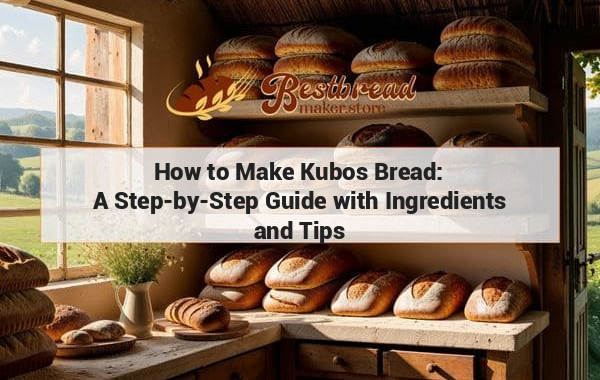How to Make French Bread in Bread Maker: A Step-by-Step Guide
To make French bread in a bread maker, start by adding water, flour, salt, sugar, and yeast into the machine. Select the French bread setting and let the bread maker do the work of kneading and proofing the dough. Finally, bake the bread in the oven for a crispy crust. Enjoy homemade French bread without the hassle of kneading by hand.
Making French bread in a bread maker is simple and convenient, bringing the classic taste of French baguettes into your home. With the right ingredients and settings, you can enjoy fresh, homemade French bread without needing professional baking skills. Below is a detailed guide on how to achieve the best results.
Key Takeaways: French bread can easily be made in a bread maker using a few basic ingredients: water, flour, yeast, and salt. Follow the recommended steps for your machine and select the French bread setting for optimal results.
What is French Bread and Why Make it in a Bread Maker?
French bread is known for its crusty exterior and soft, airy inside. Whether you want to make a classic baguette or a simple French loaf, the key is in the technique and ingredients. Using a bread maker makes this process easy and foolproof. The bread maker handles the mixing, kneading, rising, and baking, ensuring that even beginners can create this iconic bread at home.
The Basics of French Bread Ingredients
When making French bread, it’s important to focus on the simplicity of the ingredients. You will need:
- Flour: Use bread flour for a better texture.
- Water: Room temperature is ideal.
- Yeast: Instant yeast works best for bread machines.
- Salt: Enhances the flavor.
These four ingredients, in the right proportions, form the base of traditional French bread.
Steps to Make French Bread in a Bread Maker
Making French bread in a bread maker is a straightforward process if you follow a few key steps. Here's a simple guide:
1. Gather Your Ingredients
The first step is to gather all your ingredients and measure them accurately. For French bread, you’ll need about 3 cups of bread flour, 1 1/4 cups of water, 1 1/2 teaspoons of salt, and 1 1/2 teaspoons of yeast.
2. Place Ingredients in the Bread Maker
Place the ingredients into the bread maker in the order recommended by the manufacturer. Generally, this means starting with the liquids, then adding the dry ingredients. Lastly, place the yeast on top, ensuring it doesn’t come into contact with the salt directly.
3. Select the French Bread Setting
Most bread makers have a specific setting for French bread. This setting usually takes longer than regular bread settings because French bread requires more time to rise and develop its crust. Choose this setting for the best results.
4. Let the Bread Maker Work
Once the ingredients are added and the setting is chosen, the bread maker takes over. It will mix, knead, allow the dough to rise, and bake the bread. This entire process can take between 3 to 4 hours, depending on your machine.
5. Finishing the Bread
Once the bread is baked, remove it from the bread maker and allow it to cool on a wire rack. This helps the crust stay crisp. For an extra crusty loaf, you can put it in the oven for 5 minutes at a high temperature after it’s baked in the bread maker.
Common Mistakes to Avoid
Even though using a bread maker simplifies the process, there are a few common mistakes to avoid to ensure your French bread turns out perfect every time.
Using the Wrong Flour
Always use bread flour when making French bread in a bread maker. All-purpose flour doesn’t have the same gluten content, which affects the texture of the bread. Bread flour gives your loaf the chewiness and structure that is essential in French bread.
Incorrect Water Temperature
Ensure your water is at room temperature. Water that is too hot can kill the yeast, while water that is too cold may prevent the dough from rising properly.
Skipping the Salt
While it might seem like a small ingredient, salt is critical in French bread. It controls yeast fermentation and enhances the flavor. Without it, your bread can taste flat and may not rise correctly.
Enhancing the Flavor of French Bread
While French bread is known for its simplicity, there are a few ways to enhance its flavor without compromising its authenticity.
Adding Herbs and Garlic
For a subtle twist on classic French bread, consider adding herbs like thyme or rosemary. You can also add a touch of garlic powder for a more savory flavor. These additions should be mixed into the dry ingredients before starting the bread maker.
Olive Oil
Adding a tablespoon of olive oil to the dough will result in a softer crumb and a slightly richer flavor. This is a good option if you’re planning to serve the bread with pasta or other Italian-inspired dishes.
Choosing the Best Bread Maker
Choosing the right bread maker can make all the difference in your bread-making experience. There are several factors to consider when selecting a machine for French bread.
Size and Capacity
If you plan on making large loaves of French bread, ensure that your bread maker has the capacity to handle it. Some bread makers are designed for smaller loaves, which may not be ideal for larger families or gatherings.
Features
Look for a bread maker that offers a specific French bread setting. This will ensure the bread is given the proper rise time and baked to perfection. Additional features, such as crust control and delay timers, can also be helpful.
Recommended Bread Makers
For anyone interested in consistently making high-quality French bread at home, we recommend visiting bestbreadmaker.store for detailed reviews and comparisons of the best bread makers on the market. This site provides expert advice on selecting the right machine for your needs.
Frequently Asked Questions
1. Can I use all-purpose flour instead of bread flour?
While you can use all-purpose flour in a pinch, bread flour is recommended for making French bread as it has a higher gluten content, which helps create the ideal texture.
2. How do I make my French bread crustier?
For a crustier loaf, remove the bread from the bread maker a few minutes before it finishes baking and place it in a preheated oven at 400°F for about 5 minutes.
3. Can I add seeds or grains to French bread dough?
Yes, you can add seeds or grains like flax, sunflower, or sesame seeds to the dough for added texture and flavor. Be sure to add them during the mixing phase to ensure even distribution.
4. Why is my French bread dense?
Dense French bread can result from using too much flour or not allowing the dough to rise enough. Ensure you’re measuring your ingredients accurately and giving the dough enough time to proof.
5. Can I make gluten-free French bread in a bread maker?
Yes, many bread makers have a gluten-free setting. However, gluten-free French bread will have a different texture and flavor compared to traditional French bread.
By following this guide and using the right bread maker, you can enjoy the delicious, crusty taste of French bread with minimal effort.








